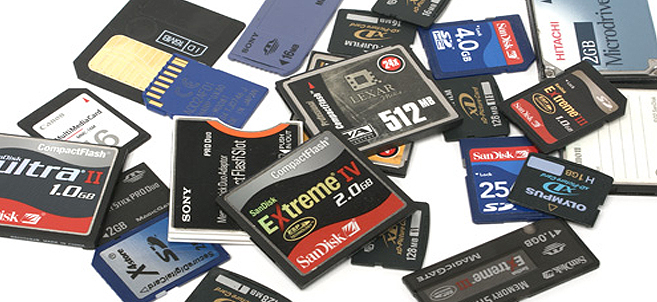-
Recupero Dati
-
Perizie e Consulenze
-
Digital Forensics
- Relazioni tecniche giudiziarie
- Analisi foto e video
- Estrazioni dati DRONI
- Ricerca Codici PIN Smartphone
- Estrazione dati Chat
- Estrazione conversazione Facebook Messenger
- Estrazione conversazioni di Instagram
- Estrazione conversazioni di Telegram
- Estrazione Forense SMS
- Estrazione Registro Chiamate
- Estrazione Registro Ricerche
- Estrazione dati utilizzo APP
- Estrazione Posizioni GPS
- Estrazione Cronologia Navigazione WEB
- Estrazione ed Analisi Forense DVR e videosorveglianza
- Estrazione ed Analisi Forense Chiavette USB
- Estrazione ed analisi forense NAS e SERVER
- Estrazione ed analisi forense schede di memoria
- Estrazione ed analisi forense Hard Disk, SSD, Nvme
- Estrazione ed analisi forense Smartphone/Tablet Android
- Estrazione ed analisi forense iPhone ed iPad
- Estrazioni dati Twitter
- Estrazione dati Instagram
- Estrazione dati Facebook
- Estrazione dati Snapchat
- Estrazione dati Google Account
- Recupero Dati Crittografati
-
Digital Forensics
- Cancellazione Sicura
-
MarketPlace Ricambi
- ToolKit 3D
- Catalogo schede PCB
-
Archivio Firmware
-
Western Digital
- Apollo
- Atlantis
- Aries
- Big bearAR
- Cypress
- Denali
- Df2_PL4K
- Df2_veni
- Diablo3S
- DragFly2
- DragFly3
- DragFly4
- Espirit
- Everest V
- FBLite
- Firebird
- Gekko
- Giant
- Hawk
- Helios
- Hubble
- HubbleLT
- HubLT2
- Jamaica
- Jamaica4K
- Jupiter
- Kermit
- Kojn_RE
- Lynx
- ManplRE
- Mars
- Mariner
- Marn5_4K
- Mckinley
- Mercury
- Midori
- Palmer
- Pebbleb
- Pinclite
- Pinnacle
- Raider
- Sabre
- SadleG6
- Saturn
- Sequoia
- Sequoia PMR
- Shasta_3D
- Spider
- SpyGlass
- STG Twin Lakes
- Sumt RE
- Tahoe 2D
- Tahoe LT
- Tahoe PL
- Tahxlvr
- Tornado
- Tornado_2D
- Tornado_2R
- Trails
- Tresselb
- Tressels
- Tresxlb
- Tresxlb2
- Venus
- Vulcan RE
- Zephyr
- Seagate
- Samsung
- Toshiba
- Hitachi
- Fujitsu
- HGST
- Maxtor
-
Western Digital
- Donatori Testine Hard Disk
- Listino Servizi Recupero Dati
- Analisi Gratuita
- Recensioni
- Contattaci
SD
|
A memory card) is a small solid-state (semiconductor) electronic device used to store data in digital form. They are commonly used in portable electronic devices such as digital cameras and cameras, smartphones, laptops and tablets, media players and other devices. |
|
|
|
memory cardare generally used to store document files, music, images, movies or other files on portable devices. The stored data is kept in memory even in the absence of electrical power, for this purpose a flash memory is used inside (no-volatile memory). There are various types, some use "proprietary standards", that is, they only work on the electronic devices for which they were designed (such as memory cards for PlayStations), while others are compatible with a large variety of devices, thus making data exchange between them is possible. In the IT field, memory cards can be considered an evolution of the classics floppy disk used in the past to store data or transfer it from one computer to another. Compared to floppy disks, however, memory cards have many advantages: they are less sensitive to magnetic fields, decidedly more robust, compared to floppy disks they have an enormous memory capacity (for example, even the smallest memory card can contain equivalent in data of thousands of floppy disks), furthermore the use of memory cards considerably reduces the cost per megabyte compared to older removable computer memory devices. |
 |
|
memory card They can be used for various purposes on different equipment. For example, in acamera is used to save photos and videos, on a tablet or laptop it can be used to store and copy documents between various devices, in some portable video game consoles it is possible to use a memory card memory to store and reuse game saves. It is usually possible to load and download data on these storage media by connecting the device in which they are used (for example the camera) to a computer, or by using special card readers. Many laptops and some modern desktop computers are equipped with integrated multi-format readers, otherwise it is possible to purchase external readers with a USB interface. The rapid diffusion, the high number of manufacturers and the commercial interests linked to them have meant that a standard for these portable storage devices has not yet been reached. There are many different types of memory cards, varying in size, shape, interface and capacity. As for capacity, as of late 2016 there are models on the market starting from a few gigabytes up to 512 GB, with capacities from 8 GB to 32 GB being very common. Below is a list of the various standards: |
 |
|
SD (Secure Digital) represent the real turning point of this type of storage devices. This technology was born in 1999 and was developed in a joint project by Panasonic Corporation, Toshiba and SanDisk. Basically it concentrates the best features of all other supports. The cards have a very high transfer speed and low power consumption (in sleep = 250 µA, Read / Write = 80 mA). They are very small in size (32 × 24 mm by 2.1 mm thick), have a connection to metal contacts (9 lines) and weigh approximately 2 grams. They offer high storage capacities (512 GB sizes are available in 2016) and content encryption features, with a transfer speed that can reach over 22.5 Mb/s. They also have a selector to make them read-only in order to avoid accidental deletion of data. In 2003, a card with a small form factor calledMiniSD, developed to meet the needs of the cellular telephony market. These cards have dimensions equal to 21.5 × 20 mm for a thickness of 1.4 mm and a weight of 1 gram. They allow you to achieve excellent levels of energy saving, consuming just 150 µA in sleep mode, 40 mA in reading and 50 mA in writing. They reach transfer speeds of around 10 Mb/s. |
.jpg) |
|
Data recovery operations on this type of device are among the most complex and expensive due to the very high cost of the equipment and software, as well as the material difficulty of operating on microscopic components. |
.jpg) |
| The complexity of the intervention increases even more when talking about monolithic memory cards, incorporated in blocks of very thin resin. |
.jpg) |
|
Have you got a problem with one of these devices?MrDisk is a Specialized Laboratory in Data Recovery equipped with all the necessary equipment to allow the restore lost data from any type of case presented to us.
In our laboratories work only specialized technicians and with years of experience in the field of the professional recovery data, to offer our customers the best possible service. Some important features:
Total data recovery is possible in the following cases:
The recovery data procedure in a clean room is divided into two steps: the diagnosis step and the data recovery procedure. The customer is constantly informed about the status of data recovery Request a free analysis by clicking on the page contattaci! |
There is 1 product.
Active filters

.jpg)
